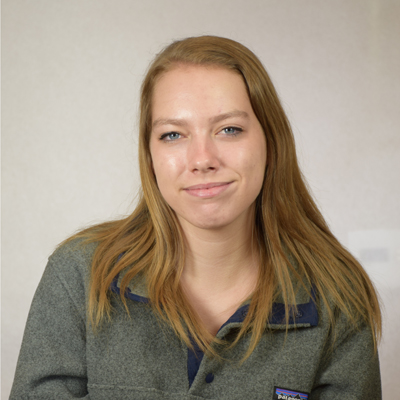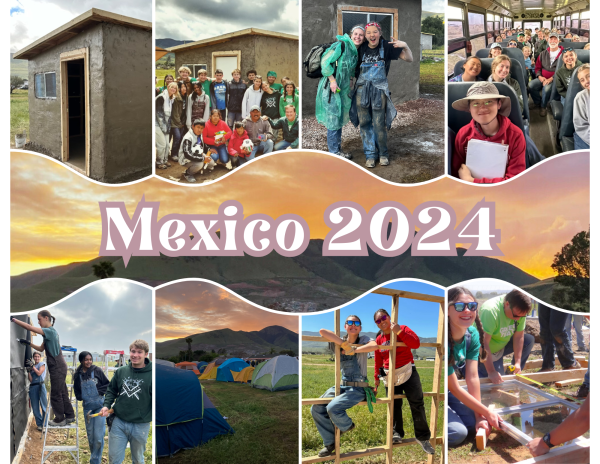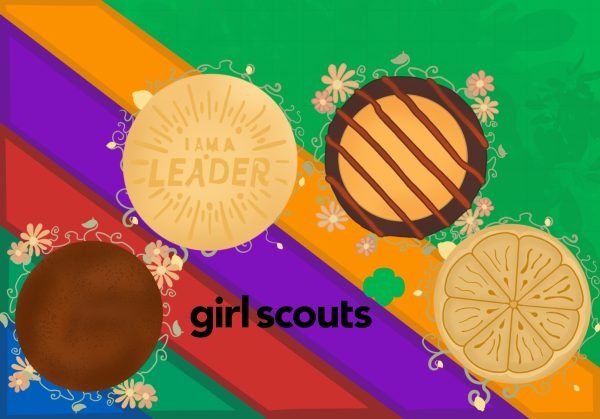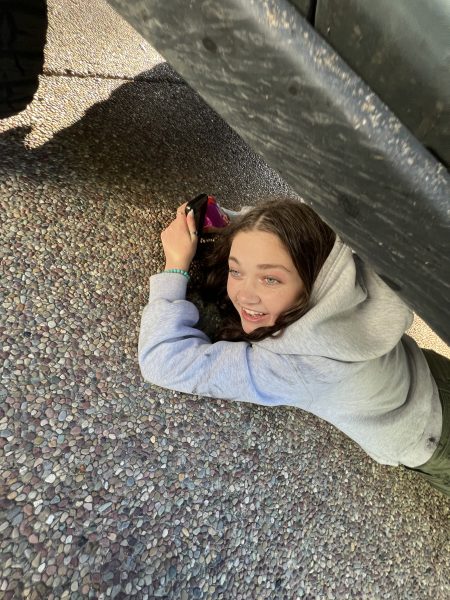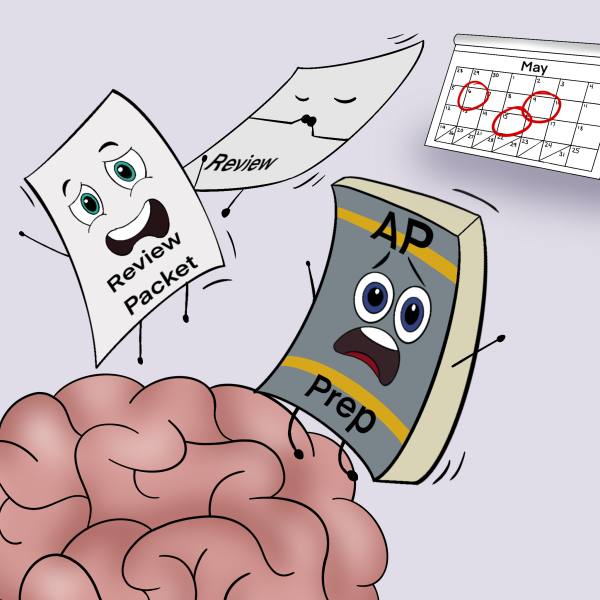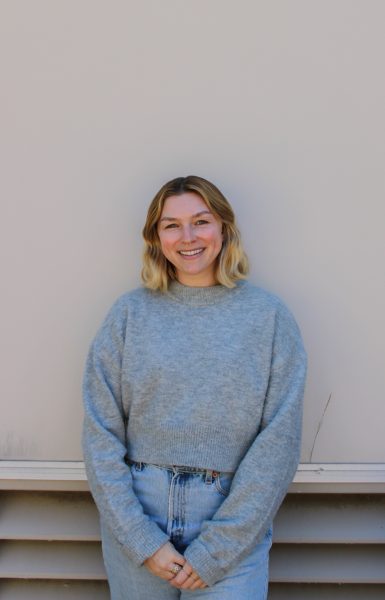Work Ethic Helps Photog Skip Prerequisite
November 17, 2015
1 of only 2 juniors in AP Photo, Megan Taylor practices “trial and error,” a technique learned through years of personal photography, to build a technical skill set required by the senior-dominated class. Taylor has had to adjust quickly, as photo teacher Collette Sweeney said, to “looking at photography, a digital work, within a different context,” becoming more demanding of herself, and developing a critical as well as artistic eye.
Taylor advanced directly from Photo 1 to AP Photo this year. Due to a scheduling conflict, she was allowed to forgo Advanced Photo, which is the prerequisite. “I had to go straight into AP Photo because I needed to and I wanted to take German 3, and there’s only 1 German 3 class and there’s only 1 Advanced Photo class, and they happen to be on the same period,” she said.
Taylor has been taking photos since 7th grade, when her dad gave her his old Nikon camera. “My dad was really into taking photos and my friend was too, Kendall Schmidt was really into taking photos, so that was all we did when we hung out,” Taylor said. “I think it was more of a hobby. It was just a fun thing. I liked looking back on them, and we used to make a bunch of little videos.”
Despite having access to a camera, Taylor said she went into Photo 1 at Campolindo with little technical experience. “I knew that I wanted to take photo in high school, I thought that’d be cool, so I kept taking photos by myself and I really enjoyed it, but I didn’t really know how to use any of my camera equipment until I got into Photo 1. My dad would explain things to me but I feel like a lot of it was trial and error. I would just fiddle around with it a lot until I was like ‘ok, if I do this that makes it brighter, darker,’” Taylor explained.
Sweeney believes Taylor’s method of trial and error is a necessity for photographic success, and admires Taylor’s willingness to apply herself. “I think her style is very sophisticated. I think that she knows very well how to work with the settings on the camera to get the desired look that she wants, so before she snaps the picture, she knows exactly what’s going to be in focus and what isn’t according to how she set the aperture and the camera,” said Sweeney.
“She’s very observant and controls the image making. I think that her subject matter is varied, so she likes to play around with a lot of different subject matter, but she’s very consistent with her technical skills,” Sweeney added.
Development of technical skill has been something Taylor feels is most challenging about the course. “We did a lot of those Photoshop packets in Photo 1 and that really helped a lot, but I kind of forgot about that, and I feel like a lot of what Advanced Photo was was learning how to use Photoshop,” she said. “It’s been hard in that sort of sense, just not knowing how to work the editing systems as well as others, but everyone in the class is really nice and they help me out a lot.”
Taylor recognizes that components other than camera knowledge are just as important. “You think it’d be a lot more simple than it actually is, and you have to have a really good artistic eye. Even if you know how the camera works, if you don’t know how to work angles or different shots then its not going to be successful,” she explained.
Taylor “always has something to show,” according to Sweeney, who believes that this work ethic will help Taylor adjust to the AP class. “I know that she takes photographs on a regular basis, so that’s probably the single most important thing: that she continue to take photos, not for the sake of just the assignment, but she seems to take images and enjoys taking photographs, so I think that already presents a good work ethic,” Sweeney said. “She enjoys it enough that it doesn’t seem like work to her.”
“I’m very flattered by that,” Taylor said of Sweeney’s praise. “In photography, I feel like I am [a hard worker]. I think that’s mainly because I enjoy it, so I’m willing to put forth more work. I do work hard in other classes; it’s just not as enjoyable. I actually like figuring things out with a camera, but then a math problem isn’t as exciting.”
Taylor is grateful to have found a class that gives her more of a connection to Campolindo. “If I didn’t [take photo], then coming to school would be really difficult to do. It still kind of is difficult and really stressful, but that’s 1 of the class periods where I feel like it’s- I wouldn’t say it’s laid back, because it is pretty vigorous this year. It’s more vigorous, but in a fun way,” she explained.
Usually, fewer than 10 students take AP Photo, but this year, the class is about 3 times the normal size. “I’d say that she’s [Sweeney’s] a lot tougher on us, which I guess is kind of difficult, but good at the same time because we’re being a lot more independent with things. Last year was also a lot of independent work,” Taylor said.
However, Taylor believes that the guidance she’s received from Sweeney has been essential to her ability to work successfully. “Before I took any classes at Campo I didn’t really understand how different angles worked for different pictures and I didn’t really know to work a camera that successfully. I’m still learning, but if I hadn’t taken this class I wouldn’t be in photography as much as I am now,” Taylor said.
According to Sweeney, Taylor has evolved as an artist since entering the class, as most of her other AP students have. “They’re not only producing better work more consistently, but they’re also looking at photography, a digital work, within a different context. They’re more demanding. They’re more critical. They can figure out and problem solve so that when they look at an image they can tell if its been Photoshopped, how it might have been manipulated,” Sweeney explained.
Though this understanding of artifice in the digital world may not necessarily help Taylor become a better photographer, Sweeney believes that “we live in a world now where images are plentiful, they’re used more than every to persuade and inform, and for that reason we need to be more sophisticated about how we look at them.”
Becoming more “critical minded” is important to one’s development as a photographer, according to Sweeney, and is something she hopes Taylor and other AP students take away from the class. “Photography is used not just for selling products, but it’s used throughout communication, throughout the visual world, and even in journalism, so that when we look at it, we have to ask ourselves, what is the intent of the photographer? What is the intent of the person presenting this? What does this image mean? What is it asking of the viewer?”
Taylor said that Sweeney has given her a greater appreciation for an often undervalued form of art. “Through being in Photo 1 and AP Photo, I’ve definitely gained a lot of respect for it, because beforehand I never used to look at other people’s photos and was just into my photos,” Taylor said. “My artistic eye didn’t really start to kick in until the end of Photo 1 and the beginning of this year, and since that has begun to happen i feel like I’ve definitely been appreciating photos a lot more.”
The AP Photo students recently submitted landscapes for their portfolios, the 1st half of which is due before winter break. “Now we’re doing a night landscape. You know in Photo 1 where we would go in a dark closet and slow the shutter speed down and then draw things with the light? It’s kind of like that, except a landscape. Depending on if you get the exposure and the shutter right, it makes it look like it’s daytime, but you can also see the stars,” Taylor explained.
Though she has yet to decide on a theme for her portfolio, Taylor predicts she’ll include many nighttime landscapes. “I actually really do like night photography and slowing down the shutter speed and drawing things with a light or sparkler, but I still don’t really have the hang of it yet,” she said. “It’s really cool if you know how to do it right, which I’m still trying to figure out.”
If she can’t take AP Photo again next year, Taylor hopes to TA for Sweeney’s AP class and “see where it goes from there.” She added, “ I do have some interest in it [as a career.] She [Sweeney] shows us a lot of documentaries on famous photographers and the National Geographic photographers, which I think would be really cool, but it’s one of those things where I have no idea if I’d be able to do that or what that entails.”
Taylor sees photography as an admirable career, but has yet to discover if she can handle its demands. “I feel like in all of the documentaries, they talk about how difficult it is and how they’re gone for 6 months and the conditions are horrible, but part of me does [want to pursue that.] I feel like it would be really cool to shoot for some type of wildlife magazine,” she said.
